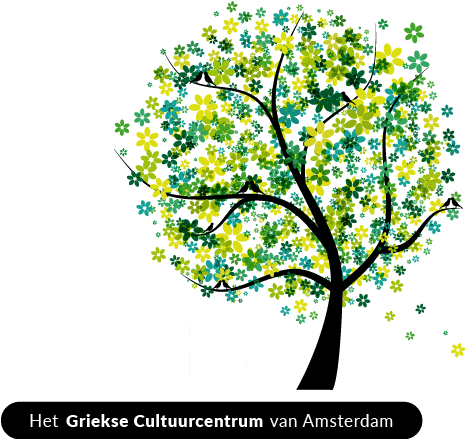No products in the basket.
Old Athens & its faded history
Sitting in one of the many cafes in the shadow of the once holy (now only touristic) hill of the Acropolis, we enjoy a cup of hot coffee, Greek, or one of the European styled we have grown accustomed to in recent years. In the hustle of the modern city, in an environment with old-fashioned decor (or as we call it in our Europeanised language: “vintage”) we are looking for traces of an older Athens, calm, authentic, romantic … An Athens of which the history exists today only in books, black and white photos and the memory of the oldest of her inhabitants.
A group of tourists gets up from the tables next to ours, they pass by and they walk to their rented bicycles. “Our next destination is Exarchia”, their guide informs them, “the centre of Graffiti, anarchists and also the centre of all the fights with the police.”
So, … if you are looking for a good point to start this trip to Athens of bygone days, that would the best one.

EXARCHEIA
The bad reputation of Exarchia today is indisputable. But the Anarchist’s favourite haunt was not always like that. Until 1960, it was a quiet neighbourhood with old two storey houses, wooden doors and only a few apartment blocks.
The main construction of the area took place mainly from 1870 until 1880. At the beginning of the 20th century it still had a different reputation from today. It was “the most bohemian neighbourhood of old Athens, the neighbourhood of poets, students, youth and youthful loves and songs”, according to the book of Kostas Dimitriadis “Old Neighborhood”, 1946.
Exarchia took its name from Vasilis Exarchos, a humble grocer from Epirus. In a difficult time – around the end of the 1800’s – the poor Exarchos left his mountainous homeland and went down to the big city where he opened a shop with food items. The quality and the good prices of the products immediately made him known to everyone who used to go at “Exarchos’ (place)” for good and above all cheap products. So day by day the old name for the area, “Pitharadika” (=the place you can buy the best jars – very important in a city without central water system), got more and more forgotten and the area took the name of the grocer.
STREFI HILL
And maybe the area of Pitharadika changed its name but it still remained a place you could find the best jars. The material came from the hill which is just above the area and it is known as Lofos Strefi. The hill was in those days not only a source for clay -for the jars-, but also for stone, a material necessary for the construction of the houses in a city which was under construction.
Over the years, the hill passed into the hands of Officer Strefi’s family. However, for Mrs Strefi it was painful to see her white laundry turning red because of the dust of the quarry, and as it is said she persuaded her husband to buy trees and plant them on the slopes of the hill. Long after, the possession of the hill passed to the State, which made it a small green corner in the centre of Athens.
PSIRRI

Psirri is today one of the most famous parts of the centre for entertainment. Full of cafes, taverns, … the area sleeps early in the morning and it is one of the most “in” places for both locals and tourists.
However, in the 19th century, Psirri had the reputation Exarheia currently has, as it was the centre of all “marginal guys”. In Athenian history, these men have been known as “mortides” or “trabuki” or “koutsavakia“. Their appearance was characteristic: a black jacket worn with only one arm in a sleeve, in order to get rid of it easily in case of a fight, raised shirtsleeves, a lock of hair in front of their face and shoes with pointed noses which was their trademark.
The end of the season for mortides arrived when the Athenian police commander Bairaktaris (whose name was not yet given to a touristic tavern like today) managed to eliminate them. Making constant raids in their hang-outs, cutting off the sleeves from the half-worn jacket, or the hair that fell on their faces, eventually he destroyed the image and the idea they represented! So in the end, they disappeared.
Still, they remain today as an inspiration for all the “tough guys” who adopt a similar style of behaviour.
KOLONAKI
Today it is without doubt the most chic area of the centre. Built just below the Acropolis, filled with expensive shops and the most trendy coffee-bars. There you will probably find the embassy of your country, if you need it as a visitor.
However, up to the middle of the 19th century it was a sparsely populated area with many fields where the best pastime of children was to hunt frogs. In the constantly growing city of Athens a new need sprung up now: to set limits to the flocks, which until then circulated everywhere and destroyed the orchards of the people. Thus the shepherds, with a formal decision of the Municipality, were removed to this area, giving thus the first name to the area: “Katsikadika” (= where the goats live).
The area began to be built and changed after 1860 and took its new name, Kolonaki, from a small pillar (in Greek κολωνάκι/ kolonaki) which was found by the Archaeological Department near the central Dexamenis square.
This pillar was one of the many that were found in the city, since people in the Middle Ages had the habit of walking around the city with a young animal because they believed that this way they could chase away epidemic diseases. Where they stopped, they set up such a pillar.
MONASTIRAKI
In the middle of the 19th century, the city changes profile and character. New houses are built, factories are constructed, and of course new work places are created. So thousands of people from the province, later also refugees, find their way to the city. Initially their road brought them to Monastiraki, where there were a bunch of smaller and bigger shops for the “new-arrivals”. There they could stop for their first shopping, which often was European-style clothes, in order to replace their traditional costumes. There they found also many small and economical inns which ensured them a relatively good accommodation until they got settled.
And while trains and buses unloaded new comers, the most central places, such as Omonia and Syntagma, were filled with people who clutched a bag with all the necessary tools of their trade and they were looking for work.
Surely this image reminds us of similar ones of the recent past.
TΗΙSSEIO or THISSIO
Now, it is one of the most central points of Athens. However, up to the first official planning of the city (in 1832 by the architects Kleanthis and Schaubert) it housed all the threshing floors of the city, a focus point in the lifes of the population that was mostly rural. That’s why the area in those days was called … Alonia (=threshing floors).
ΕLLINIKO, the area of the old airport
Certainly many of us can still remember the old airport by the sea, which reminds in nothing of the new one with the modern systems and designs.
But this area, Elliniko, was equally popular before the construction of the airport. The main reason was that because of its safe distance from the rest of the city, one of the largest quarantine stations functioned there.
So because of the “Limokathartirio” (as quarantine sites were called), the area was named “Limikon“. At the beginning of the 20th century, the name was changed into “Elliniko“, although in the minds of the Athenians it took much more time to change names.
ATHINAS STREET
Originally in the Athens of “then,” there was the plan to build the royal palace in the place where currently Omonia Square is located. So a great road was planned that would connect Monastiraki with the palace. There, many shops could be found and in the middle of the way there would be a large recreation garden for all Athenians. Yet, the location for the palace was changed, and so eventually the plans for the garden were changed, which became a Square. It is Kotzia Square, where the city’s main town hall is located and the road is no other than Athinas Street.

There is still much to say about yesterday’s Athens.
Talking about its appearance, we could say that her main feature was the colours of the small wooden, freshly painted houses with the courtyards and the colourful plant pots. The fragrance from the roses, geraniums and jasmines that were everywhere. The whitewashed walls that beautified the humbleness of the poor houses and the small windows with the curtains that were meant not so much to hide the poverty, but rather to give a more beautiful colour to it. The courtyards were full of children’s voices and in the streets there were no cars. Kitchens had a smell of spices and delicacies, and the milkman was putting every morning the milk outside of the door.
And people were simple. They worked shifts in the factories sometimes in morning and sometimes in the evening, and every Sunday morning, the only holiday of the week, they were sitting under the pergola’s in their common courtyards and drank coffee all together. And at noon they were gathering together at common tables with friends, relatives and sharing the little or much which came out of their kitchens.
In this society, the people of those days took every day as it came and did not take anything for granted. That’s why they could laugh more.
Perhaps this is the common difference between all modern societies and the past ones. And perhaps a flashback to the old could be something beyond nostalgic, it could be … teaching.



